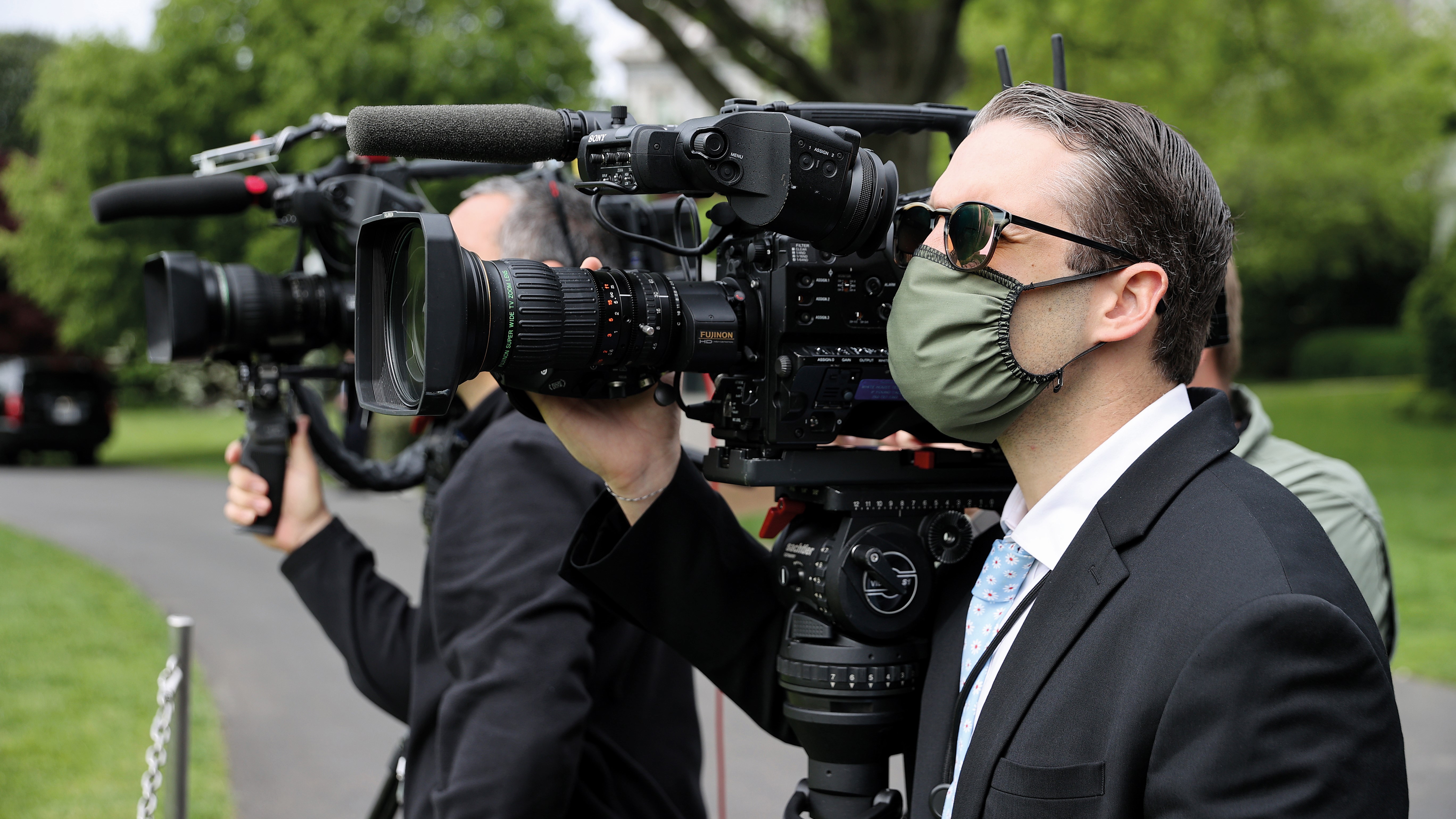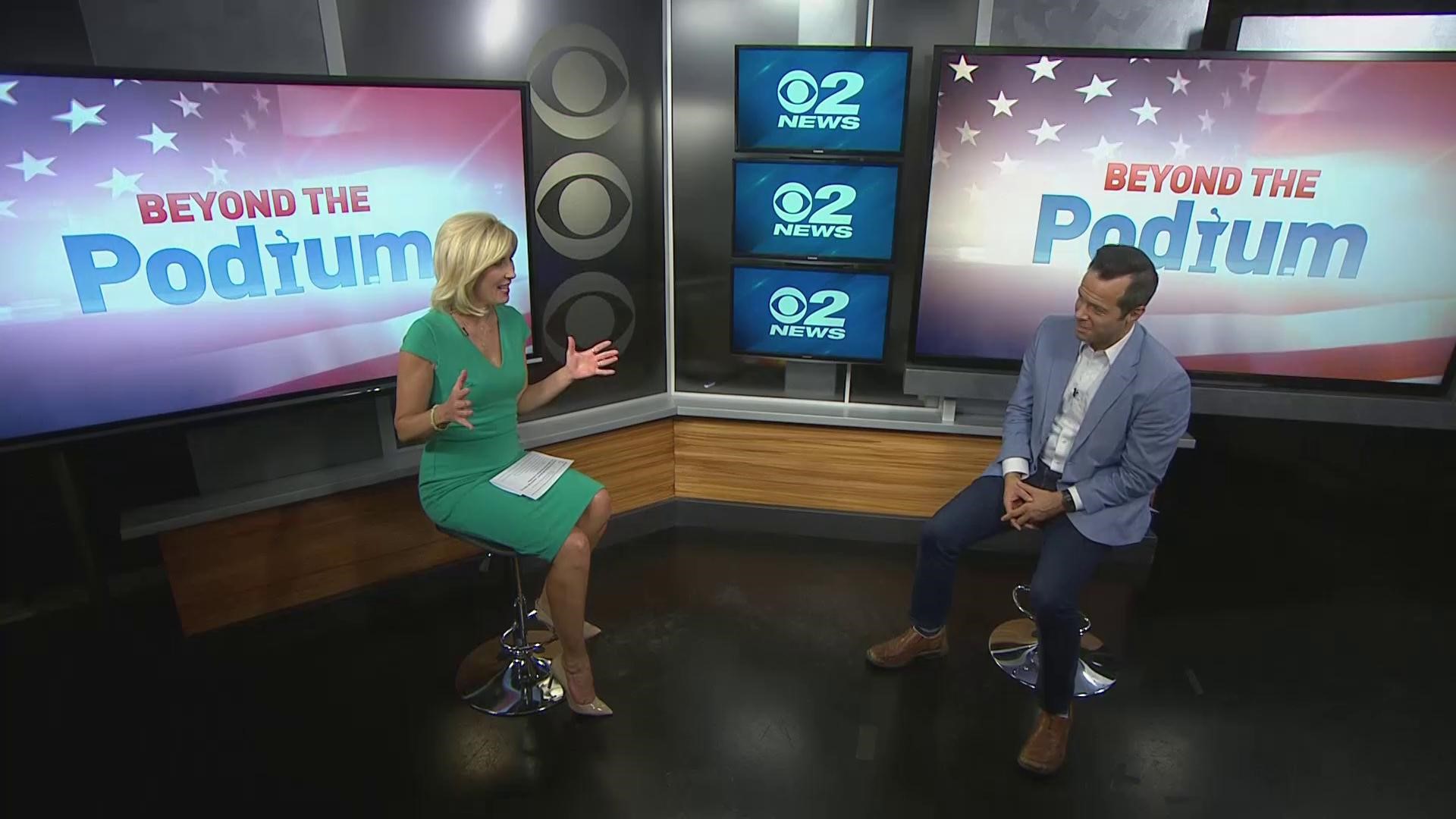2020 Campaign: A News Cycle Unlike Any Other
Safety, new tech and emphasizing broadcast’s role as a purveyor of trust are key priorities

SAN FRANCISCO—If the year 2020 is any indication, the election this November will bring broadcast stations a share of challenges they’ve never experienced. Social-distancing restrictions, staff reductions, off-site productions and other constrictions will collide in the midst of an election season unlike any other.
The twin events that have dominated 2020—the spread of the coronavirus and the civil uprising in cities across the nation—have compelled broadcasters to make quick changes, from the technology they use to the way they broadcast.
And that includes the election itself.
NEVER-ENDING DRAMA
What with swirling concerns over mail-in ballots and claims of voter fraud, “I think it may be election week or election month,” rather than the typical election night, said Sean McLaughlin, vice president of news for The E.W. Scripps Co. “So what that looks like impacts how you tell that story.”
As a result, broadcasters around the country are taking unique approaches to news coverage, from centralized newscasting to augmented reality options.
Scripps, for one, has decided to take a centralized newscasting approach to its election coverage. With a central desk in Denver and another in Washington, D.C., handling national campaigns, the broadcaster has found nearly everything about this year’s election cycle has been flipped on its head.
“You have this weird confluence of the political environment, economic fallout and the coronavirus,” McLaughlin said. “Every day now has a kind of day-to-day news feel. It’s certainly one of the odder political cycles.”
Get the TV Tech Newsletter
The professional video industry's #1 source for news, trends and product and tech information. Sign up below.
But the strange tale of 2020 has been a good one for local news. Broadcasters like Sinclair Broadcast Group are giving even greater focus to the impact the elections will have on their local markets.
“[W]e have a great opportunity to showcase our commitment to providing unmatched coverage of the 2020 campaigns in each of our markets,” said Scott Livingston, vice president of news at Sinclair, which owns and operates 294 TV stations in 89 markets.
The network is highlighting that coverage with a new segment called “Beyond The Podium,” a feature that allows each station to highlight coverage that’s important to that market. The network has stations in Top 10 markets like Washington, D.C. as well as in small markets like that of Kirksville, Mo.
“[‘Beyond the Podium’ is a] sub-brand of the local/station election coverage brand that will help showcase meaningful content that goes beyond the typical sound bite and rhetoric,” Livingston said. “It will also provide additional context and help viewers understand what we are doing and our commitment to provide additional perspective on the issues and candidates on a local, regional and national level.”

The virtual nature of both the Democratic and Republican conventions meant that broadcasters needed fewer resources because there were very little to no “physical” events. But there is still a need to provide additional context to what is happening and like all broadcasters, Sinclair is taking advantage of the latest in video conferencing technologies. According to Livingston, the company’s “Beyond the Podium” and “Connect to Congress” coverage are designed to position Sinclair stations as the political news leader in each market, Livingston said.
“Technical advances like Zoom, Skype and Facetime now a part of our normal everyday coverage, and with our coverage commitment year round, we believe we are positioned to create unique content from all our markets.”
For Scripps, the company’s decision to set up a central news desk several years ago made a big difference when the coronavirus hit. “We built up our national desk and [our use of] content sharing and that helped us do our jobs during COVID,” said Ray Thurber, vice president of engineering for Scripps, which owns 60 stations in 42 markets.
This election cycle, the company will rely on augmented reality in some markets, with journalists out in the field continuing to meet the company’s three goals in this new coronavirus world: employee safety, business continuity and fulfilling the tenets of responsible journalism.
SAFETY AND THE FIRST AMENDMENT
This year—on top of changes to technology and techniques—broadcasters also must focus on safety and rights. The Radio Television Digital News Association, the nation’s leading broadcast news organization, is pressing journalists to know their rights when it comes to covering news events, staying safe in the field and in the newsroom, and reporting responsibly.
“Much of our election coverage guidance has been contained within the context of a lot of educational and professional development training and resources we have been providing,” said Dan Shelley, executive director and chief operating officer for RTDNA. “Specifically, we have provided such opportunities in areas such as journalist safety, covering civil unrest, DEI [diversity, equity and inclusion] webinars and curriculum.”
Sinclair’s Livingston agrees; protecting its journalists is of utmost importance. “Safety is our top priority and we will continue to re-evaluate policies as we monitor the spread and impact of the pandemic,” he said.
For RTNDA’s Shelley, it’s equally necessary for broadcasters to take the phrase “truth and accuracy above all” to heart, especially in today’s news cycle. It should be part of this election coverage’s key tenets, he said, as well as the need for independence and transparency and accountability for consequences.
That is necessary this year more than any other, he said.
“This year more than in any election period in the past, I am speaking out to journalists to help them avoid spreading disinformation, the intentional spreading of false information by a bad actor or actors, and misinformation, the unwitting spread of false information by someone who is not a bad actor,” Shelley said.
This is particularly true for broadcasters as they enter the quick news cycle of an election season. “As deep fakes and other forms of altered video become more prevalent—and as political campaigns and others increasingly set up faux ‘news’ websites and social media channels—journalists’ role to provide fact-checking and exposure to such methods is critical, even essential, to covering campaigns and politics responsibly,” he said.
Scripps, which was founded as a news company more than 140 years ago, looks at everything they do from a journalism bent, McLaughlin said. Integrity in news reporting is a key tenet of that. “One of the things we’ve tracked is the trust of the local media branch,” he said. And when asked which outlets are questionable when it comes to integrity, “it’s very rare that they’re ever talking about local news,” he said.” We’ve done a good job to maintain our integrity and to stay above the fray.”
The unusual nature of 2020 means that viewers looking for truth are turning to local news. “People now rely more than they ever have on their local news,” McLaughlin said.
From the Democratic and Republican National Conventions to election night itself, much is set to change—or has changed already.
For Spectrum Networks, coverage during this year’s election cycle is all about cross-platform local coverage. For its coverage of the Democratic and Republican National Conventions, local stations focused on how best to highlight national issues that are most relevant to local communities.
“We believe local journalism is essential to building strong communities and a healthy democracy,” said Mike Bair, executive vice president of Spectrum Networks. The Spectrum Networks is a series of 24/7 news and sports networks owned by Charter Communications, which serves more than 30 million customers in 41 states.
To provide the most comprehensive local perspective on the virtual conventions, D.C. bureau reporters and political reporters in each region provided news reports on the impact of the conventions at the state and local levels. Through its Spectrum News App, the networks’ chief national political reporter provided in-depth coverage from a national perspective as well as local curated content from local partner news outlets.
Now knee-deep in the election cycle, broadcasters have revamped their reporting styles and introduced new technology to enhance their coverage.
Sinclair tapped into technologies like Zoom, Skype and Facetime to provide reaction in real time to produce content that is shared among all of its stations. “Our expertise with these technologies will also allow us to access key voices immediately in all of our markets,” Livingston said.
The broadcaster’s digital and broadcast platforms also are working hand in hand to identify important storylines more effectively. “[These conferencing technologies are] a dimension of our digital coverage, which can be shared with broadcast platforms,” he said.
For Sinclair, the technology it has used during its election coverage makes it well-positioned to offer context and focus on key storylines that will have long-term impact. “In today’s news cycle, we’re focusing on unique storylines that separate us from our competitors,” Livingston said.
Susan Ashworth is the former editor of TV Technology. In addition to her work covering the broadcast television industry, she has served as editor of two housing finance magazines and written about topics as varied as education, radio, chess, music and sports. Outside of her life as a writer, she recently served as president of a local nonprofit organization supporting girls in baseball.

